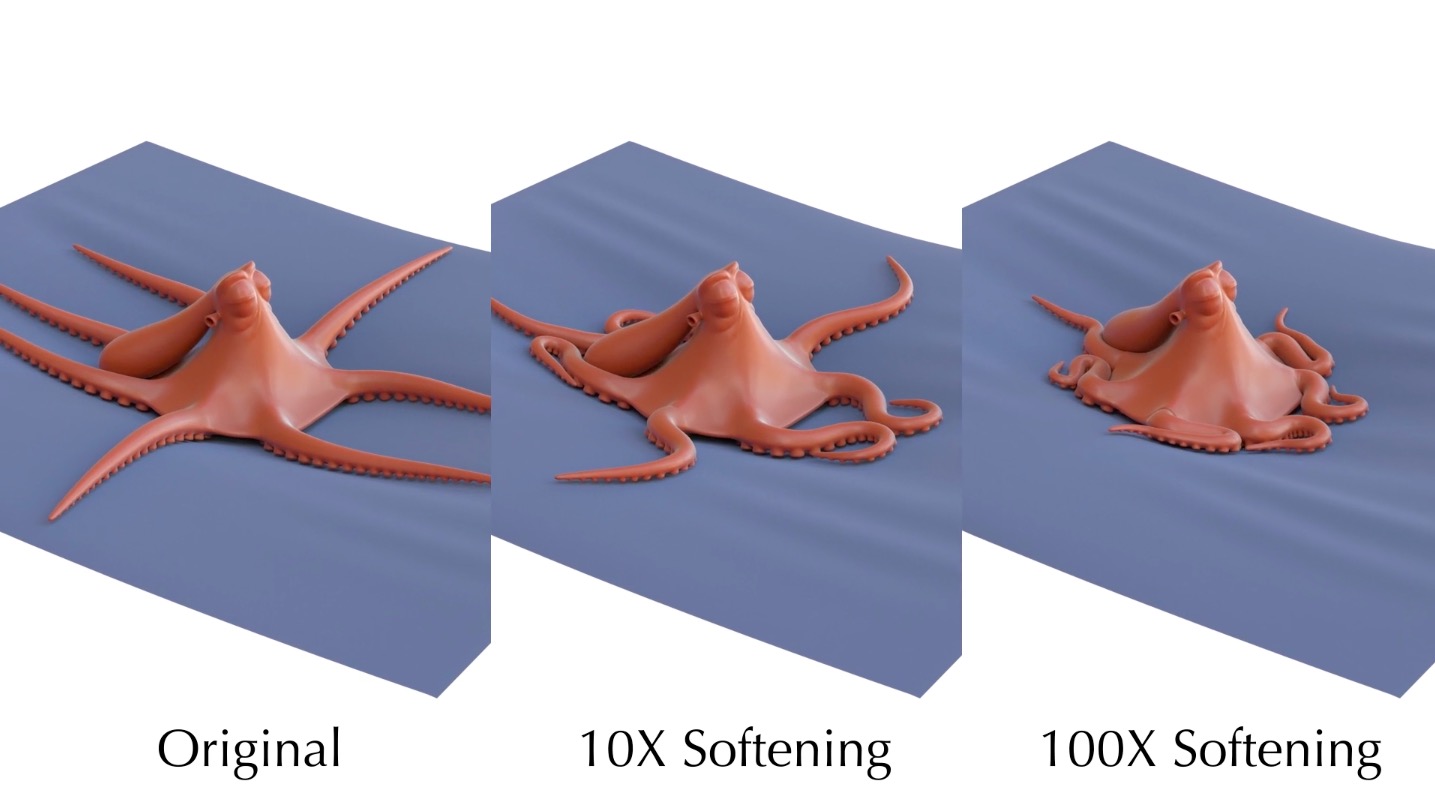Pixar presents an analysis of anisotropic hyperelasticity that obtains closed-form expressions for the eigendecompositions of many common energies, which can then be used to build fast and concise Newton implementations.
Pixar leverage our analysis in two separate applications. First, Pixar shows that existing anisotropic energies are not inversion-safe, and contain spurious stable states under large deformation. They then propose a new anisotropic strain invariant the enables the formulation of a novel, robust, and inversion-safe energy.
The new energy fits completely within our existing analysis, so closed-form expressions are obtained for its eigensystem as well. For our second application, we use our analysis to badly-conditioned finite elements. Using this method, we can robustly simulate large deformations even when a mesh contains extremely badly-conditioned, zero-volume elements. We accomplish this by swapping the badly-behaved isotropic direction with well-behaved anisotropic energy. We validate the efficacy of the approach on both test and production examples.







